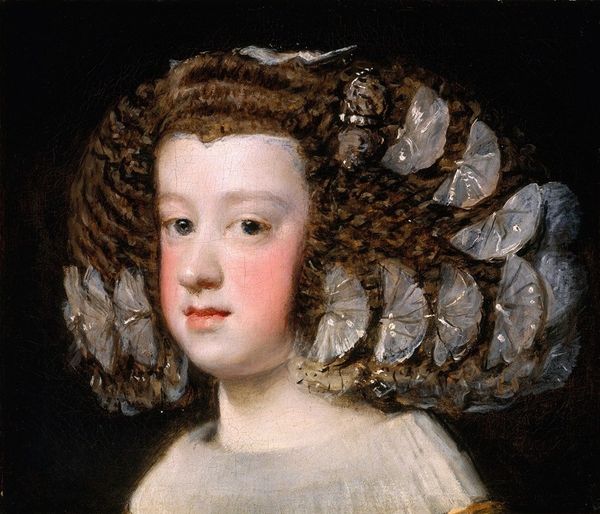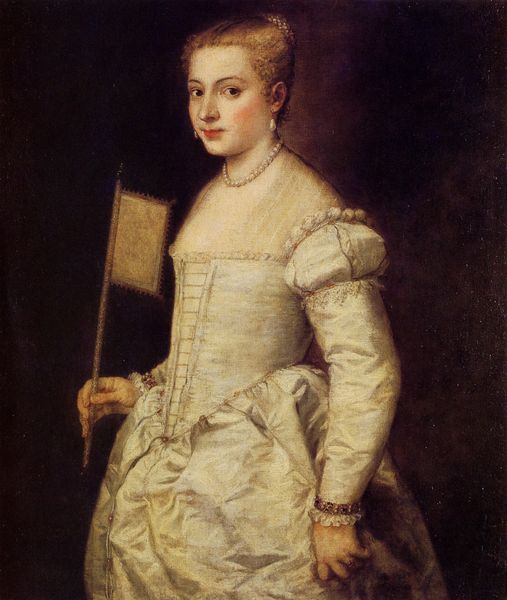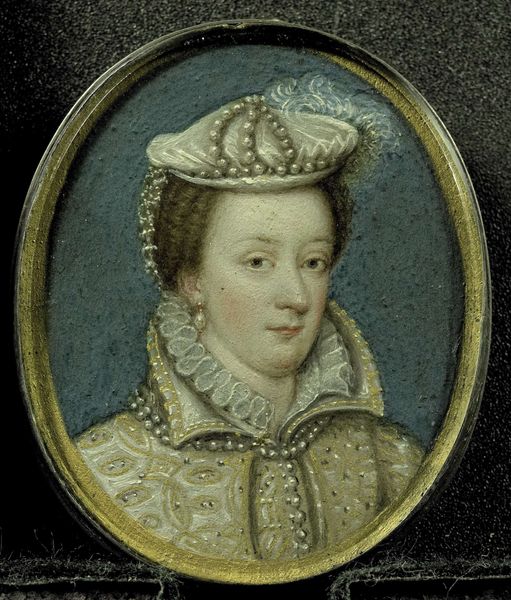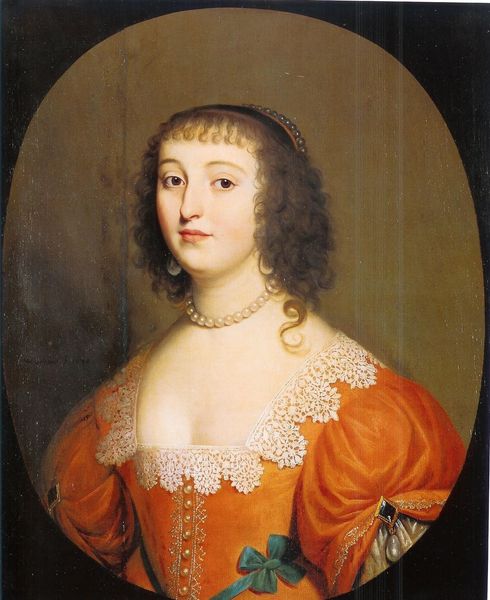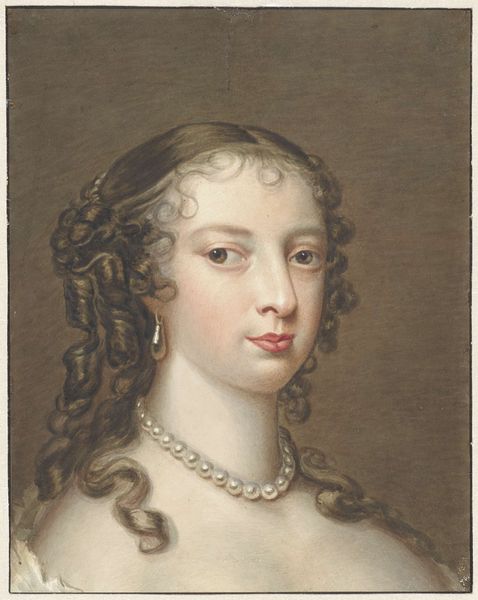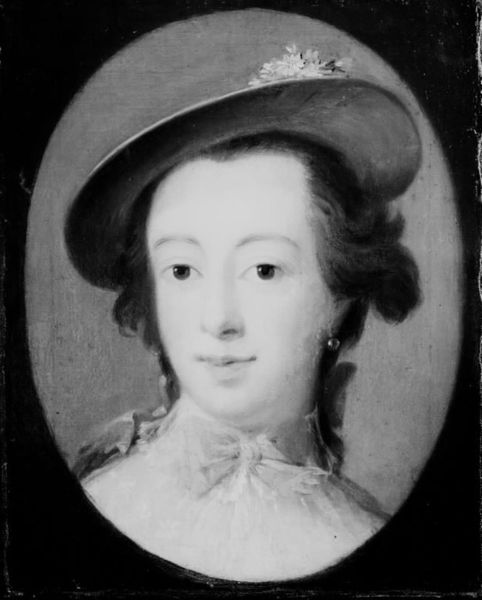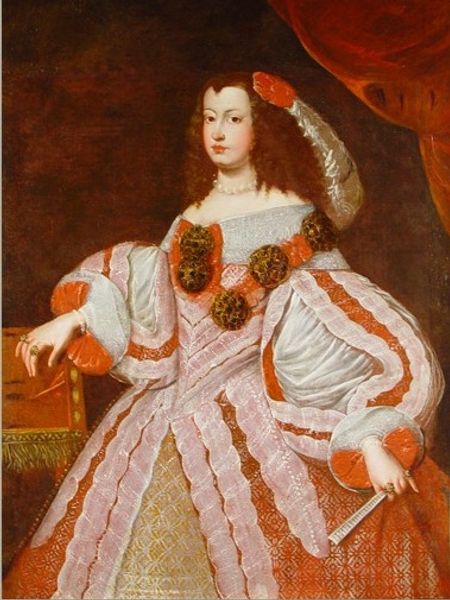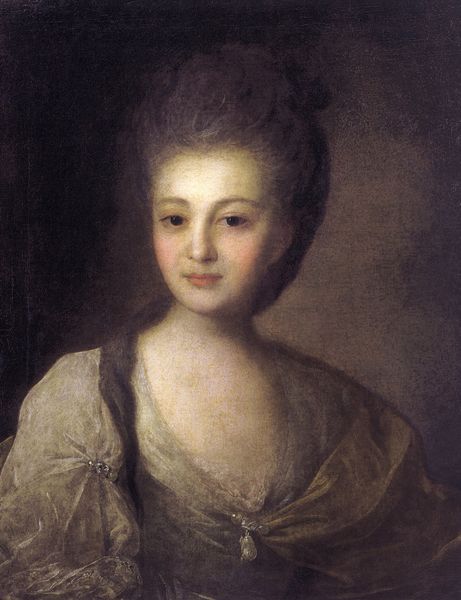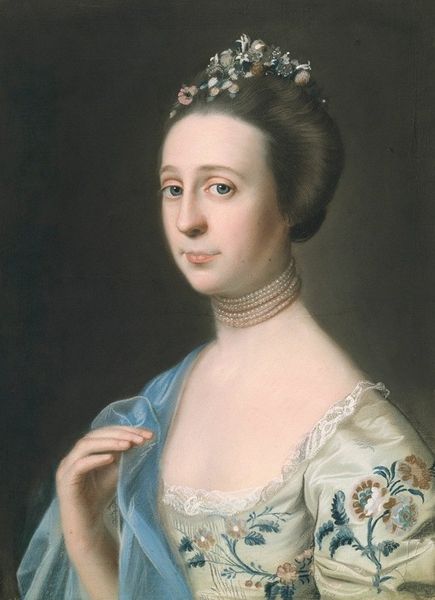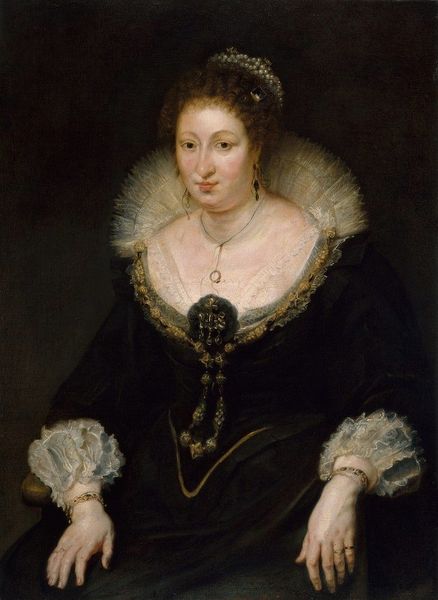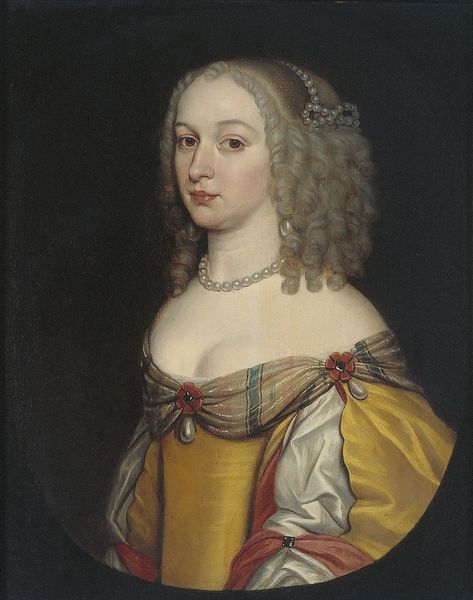
painting, oil-paint
#
portrait
#
baroque
#
painting
#
oil-paint
Copyright: Public domain
Diego Velázquez painted this portrait of Infanta Maria Teresa, likely in Madrid, during the 1650s. These paintings had a public role to play: they were diplomatic tools, used to cement political alliances through marriage. Looking at the image, we see the visual codes of wealth and status. Consider the elaborate dress and the carefully styled hair. These details signaled the importance of the sitter and her family, the Spanish Habsburgs. Velázquez was the court painter and master of propaganda. He understood the politics of imagery. His portraits were not just likenesses; they were carefully constructed representations of power and legitimacy. For art historians, understanding such images requires archival research. Letters, inventories, and diplomatic records can reveal the original function and meaning of these portraits. By studying the social and institutional context, we can begin to understand the public role of art in 17th-century Spain.
Comments
No comments
Be the first to comment and join the conversation on the ultimate creative platform.
